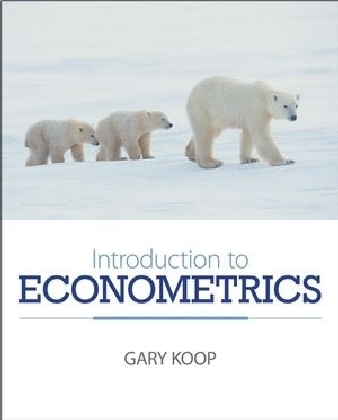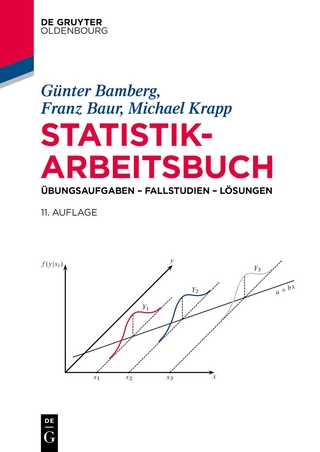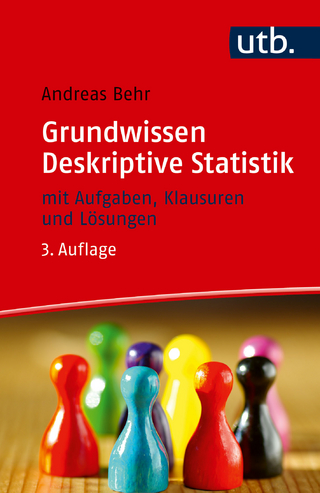
Introduction to Econometrics
John Wiley & Sons Inc (Verlag)
978-0-470-03270-1 (ISBN)
Introduction to Econometrics has been written as a core textbook for a first course in econometrics taken by undergraduate or graduate students. It is intended for students taking a single course in econometrics with a view towards doing practical data work. It will also be highly useful for students interested in understanding the basics of econometric theory with a view towards future study of advanced econometrics. To achieve this end, it has a practical emphasis, showing how a wide variety of models can be used with the types of data sets commonly used by economists. However, it also has enough discussion of the underlying econometric theory to give the student a knowledge of the statistical tools used in advanced econometrics courses.
Gary Koop is Professor of Economics at the University of Strathclyde. Gary has published numerous articles econometrics in journals such as the Journal of Econometrics and Journal of Applied Econometrics. Gary has taught econometrics for many years and is the author of following textbooks, all published by John Wiley & Sons Ltd: Analysis of Economic Data 2ed, Analysis of Financial Data and Bayesian Econometrics
Preface ix
Chapter 1 An Overview of Econometrics 1
1.1 The importance of econometrics 1
1.2 Types of economic data 2
1.3 Working with data: graphical methods 6
1.4 Working with data: descriptive statistics and correlation 11
1.5 Chapter summary 26
Exercises 26
Chapter 2 A Non-technical Introduction to Regression 29
2.1 Introduction 29
2.2 The simple regression model 30
2.3 The multiple regression model 42
2.4 Chapter summary 55
Exercises 57
Chapter 3 The Econometrics of the Simple Regression Model 59
3.1 Introduction 59
3.2 A review of basic concepts in probability in the context of the regression model 60
3.3 The classical assumptions for the regression model 64
3.4 Properties of the ordinary least-squares estimator of β 67
3.5 Deriving a confidence interval for β 75
3.6 Hypothesis tests about β 77
3.7 Modifications to statistical procedures when σ2 is unknown 78
3.8 Chapter summary 81
Exercises 82
Appendix 1: Proof of the Gauss–Markov theorem 84
Appendix 2: Using asymptotic theory in the simple regression model 85
Chapter 4 The Econometrics of the Multiple Regression Model 91
4.1 Introduction 91
4.2 Basic results for the multiple regression model 92
4.3 Issues relating to the choice of explanatory variables 96
4.4 Hypothesis testing in the multiple regression model 102
4.5 Choice of functional form in the multiple regression model 109
4.6 Chapter summary 115
Exercises 116
Appendix: Wald and Lagrange multiplier tests 117
Chapter 5 The Multiple Regression Model: Freeing Up the Classical Assumptions 121
5.1 Introduction 121
5.2 Basic theoretical results 122
5.3 Heteroskedasticity 124
5.4 The regression model with autocorrelated errors 138
5.5 The instrumental variables estimator 149
5.6 Chapter summary 164
Exercises 165
Appendix: Asymptotic results for the OLS and instrumental variables estimators 168
Chapter 6 Univariate Time Series Analysis 173
6.1 Introduction 173
6.2 Time series notation 175
6.3 Trends in time series variables 177
6.4 The autocorrelation function 179
6.5 The autoregressive model 181
6.6 Defining stationarity 195
6.7 Modeling volatility 197
6.8 Chapter summary 205
Exercises 207
Appendix: MA and ARMA models 210
Chapter 7 Regression with Time Series Variables 213
7.1 Introduction 213
7.2 Time series regression when X and Yare stationary 214
7.3 Time series regression when Y and X have unit roots 217
7.4 Time series regression when Y and X have unit roots but are NOTcointegrated 227
7.5 Granger causality 227
7.6 Vector autoregressions 233
7.7 Chapter summary 247
Exercises 248
Appendix: The theory of forecasting 251
Chapter 8 Models for Panel Data 255
8.1 Introduction 255
8.2 The pooled model 256
8.3 Individual effects models 256
8.4 Chapter summary 271
Exercises 272
Chapter 9 Qualitative Choice and Limited Dependent Variable Models 277
9.1 Introduction 277
9.2 Qualitative choice models 278
9.3 Limited dependent variable models 296
9.4 Chapter summary 304
Exercises 306
Chapter 10 Bayesian Econometrics 309
10.1 An overview of Bayesian econometrics 309
10.2 The normal linear regression model with natural conjugate prior and a single explanatory variable 315
10.3 Chapter summary 326
Exercises 326
Appendix: Bayesian analysis of the simple regression model with unknown variance 328
Appendix A: Mathematical Basics 333
Appendix B: Probability Basics 338
Appendix C: Basic Concepts in Asymptotic Theory 348
Appendix D: Writing an Empirical Project 353
Tables 359
Table 1. Area under the standard normal distribution Pr(0 ≤ Z ≤ z) 359
Table 2. Area under the Student t distribution for different degrees of freedom (DF), Pr(Z ≥ z) = α 360
Table 3. Percentiles of the chi-square distribution 361
Table 4a. Area under the F-distribution for different degrees of freedom, ν1 and ν2, Pr(Z ≥ z) = 0.05 362
Table 4b. Area under the F-distribution for different degrees of freedom, ν1 and ν2, Pr(Z ≥ z) = 0.01 363
Bibliography 364
Index 365
| Erscheint lt. Verlag | 1.4.2008 |
|---|---|
| Verlagsort | New York |
| Sprache | englisch |
| Maße | 189 x 225 mm |
| Gewicht | 709 g |
| Themenwelt | Wirtschaft ► Volkswirtschaftslehre ► Ökonometrie |
| ISBN-10 | 0-470-03270-7 / 0470032707 |
| ISBN-13 | 978-0-470-03270-1 / 9780470032701 |
| Zustand | Neuware |
| Informationen gemäß Produktsicherheitsverordnung (GPSR) | |
| Haben Sie eine Frage zum Produkt? |
aus dem Bereich


